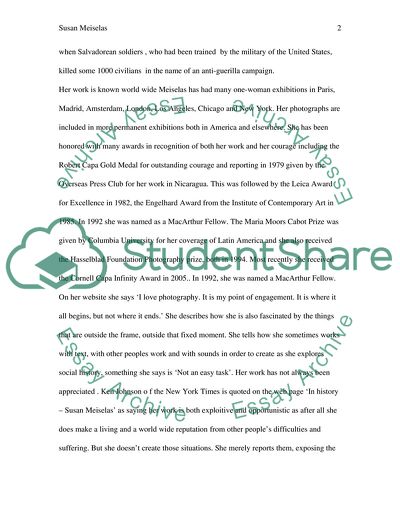Cite this document
(American Photographic Journalist Susan Meiselas' Art Essay, n.d.)
American Photographic Journalist Susan Meiselas' Art Essay. Retrieved from https://studentshare.org/visual-arts-film-studies/1560370-susan-meiselas
American Photographic Journalist Susan Meiselas' Art Essay. Retrieved from https://studentshare.org/visual-arts-film-studies/1560370-susan-meiselas
(American Photographic Journalist Susan Meiselas' Art Essay)
American Photographic Journalist Susan Meiselas' Art Essay. https://studentshare.org/visual-arts-film-studies/1560370-susan-meiselas.
American Photographic Journalist Susan Meiselas' Art Essay. https://studentshare.org/visual-arts-film-studies/1560370-susan-meiselas.
“American Photographic Journalist Susan Meiselas' Art Essay”. https://studentshare.org/visual-arts-film-studies/1560370-susan-meiselas.


